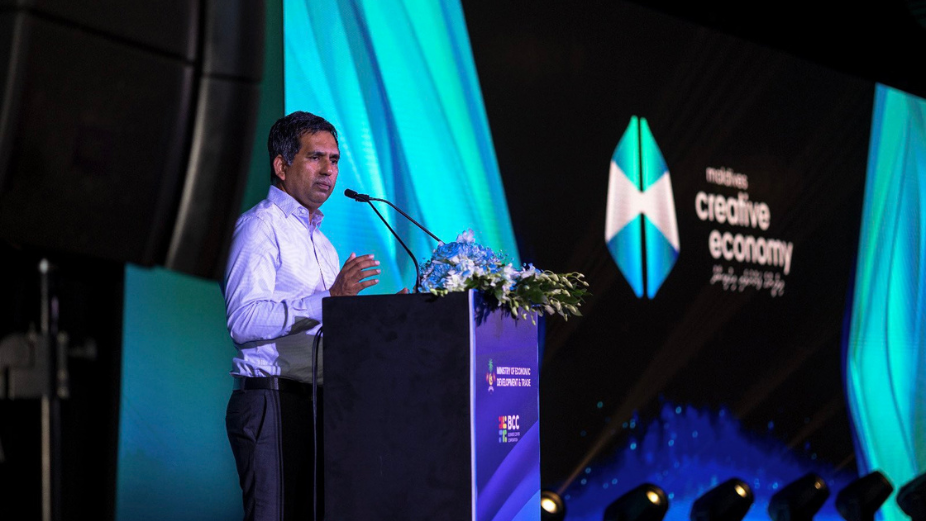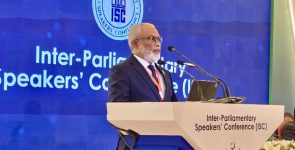
The Maldivian government has launched a five-year Creative Economy Strategic Action Plan alongside the introduction of a Creative Economy Fund, offering up to MVR 100 million in funding to women entrepreneurs. The initiatives were unveiled by Minister of Economic Development and Trade, Mohamed Saeed, during a special ceremony held at Dharubaaruge on Tuesday evening.
Formulated with the needs of creatives in mind, the strategic action plan aims to bolster the nation’s creative industries through a series of targeted initiatives. These include expanding financial support and investment, utilising technology to develop creative fields, protecting intellectual property, increasing market access for products, investing in skills and learning, and establishing dedicated workspaces for creative endeavours.
Speaking at the launch, Business Centre Corporation (BCC)’s Managing Director, Ibrahim Ziyaau, described the plan as a source of hope for individuals who have been working in the creative field over the years, particularly the youth. He emphasised the government’s commitment to developing a creative economy, noting that Minister Saeed is among those spearheading these efforts. Ziyaau also highlighted the BCC’s crucial role in establishing the Creative Economy Fund and expressed gratitude to all those involved.
The Creative Economy Fund focuses on empowering women entrepreneurs by providing financial assistance ranging from MVR 50,000 to MVR 300,000 for new ventures. Start-ups may also seek loans up to MVR 100 million. Applications for the fund will open from 10th October onwards, with the inaugural year concentrating on supporting film and music production ventures, arts and crafts, and content creation. Additional creative fields are expected to be incorporated into the fund’s coverage in the coming years.
Minister Saeed highlighted the financial challenges faced by the state when the current administration took office but affirmed President Dr Mohamed Muizzu’s dedication to harnessing the creative talents of the nation’s youth. “We envision strengthening and expanding the tourism industry, which is the most reliant economic sector,” Saeed stated, indicating that the development of the creative economy is integral to this vision.
The introduction of the MVR 100 million Start-up Loan Scheme for women entrepreneurs is a key pledge that President Muizzu aims to fulfil within the first 100 days of his presidency. Earlier, the President announced plans for an MVR 25 million grant scheme—through the Youth Ministry budget—to support individuals and associations interested in creative upskilling. He has also committed to assisting local artists in promoting and marketing their work to potential buyers.
The launch of the Creative Economy Strategic Action Plan and the accompanying fund marks a significant step towards diversifying the Maldivian economy and nurturing the country’s creative talent. By focusing on women entrepreneurs and the youth, the government is addressing key demographics that can drive innovation and sustainable growth.
Investing in the creative industries not only offers new economic opportunities but also enriches the cultural fabric of the nation. The emphasis on technology, skills development, and market expansion suggests a forward-thinking approach that could position the Maldives as a regional hub for creative excellence.
However, the success of these initiatives will depend on effective implementation and ongoing support. Ensuring that the funding reaches those who need it most, protecting intellectual property rights, and fostering an environment conducive to creative expression are challenges that will need to be addressed. Moreover, integrating these efforts with broader economic goals, such as enhancing the tourism sector, will require coordinated policy and collaboration across different sectors.
Overall, the government’s commitment to developing the creative economy is a positive development that could yield substantial benefits for the Maldives, both economically and culturally.













